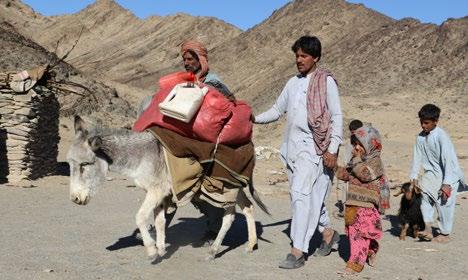
1 minute read
Graphical Summary
2. Background of the Study
2.1 Climate Change, Migration and Pakistan
Advertisement
2.1.1 Pakistan’s country profile
The Islamic Republic of Pakistan is located in South Asia, situated between the Karakoram mountain range, the Himalayas and China in the North-East, Afghanistan in the North-West, Iran in the South-West, the Arabian Sea in the South and India in the East. In the West, the Khyber Pass and Bolan Pass have previously served as traditional migration routes between Europe and the rest of South Asia.
The country covers an area of 796,095 km² and, in 2021, has a population of more than 220 million people, making it the fifth most populous country in the world. The geographical area of Pakistan can be divided into five major regions: the Himalayan and Karakoram ranges and their subranges, the Hindu Kush and Western mountains, the Balochistan Plateau, the submontane plateau (Potohar Plateau, Salt Range, Trans-Indus Plain and Sialkot area); and the remarkably flat fertile Indus River Plain, which is cultivated by the River Indus that flows from Tibet/China and enters Pakistan through Gilgit Baltistan and drains southward into the Arabian Sea. There are further subdivisions within each major division, including a number of desert areas. Approximately three-fifths of the country’s land mass consists of mountain ranges, inhospitable plateaus and complex valleys, while the other two-fifths consists of flat plains.

The country is divided into four provinces (Punjab, Sindh, Balochistan. and Khyber Pakhtunkhwa), one federal territory (Islamabad Capital Territory) and two autonomous administrative territories (Azad Jammu and Kashmir and Gilgit-Baltistan). Each administrative division is ethnically and linguistically distinct, shaped by historical evolution and ecological factors. Cultural, religious and social differences have from time to time led to conflicts, often in remote areas which are virtually ungovernable by the central authorities. The results of this study are focused on the Sindh, Balochistan, and Khyber Pakhtunkhwa regions. With a Human Development Index (HDI) of 0.557, Pakistan ranks at the lower end of the medium development category (currently 154th out of the 189 countries assessed by The United Nations Development Programme (UNDP).²⁶ According to the Multidimensional Poverty Report, 38.8 per cent of the Pakistani population live in multidimensional poverty, with significant variations in development levels between rural and urban areas; one in every ten people living in an urban area is multidimensionally poor compared to five in every ten people living in rural areas.²⁷










